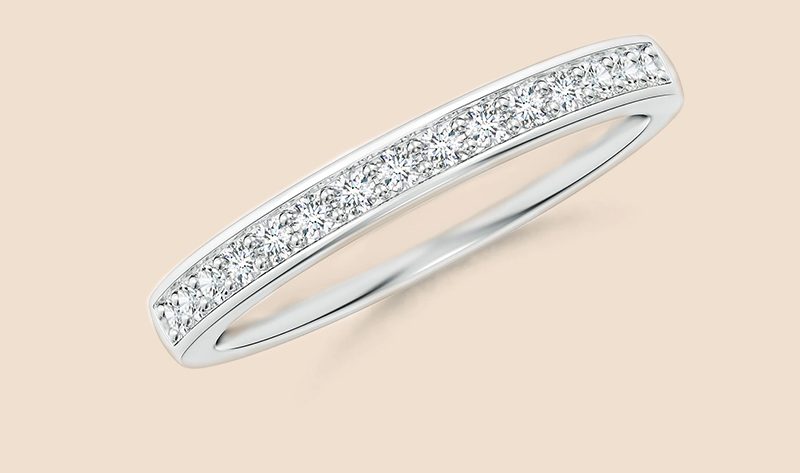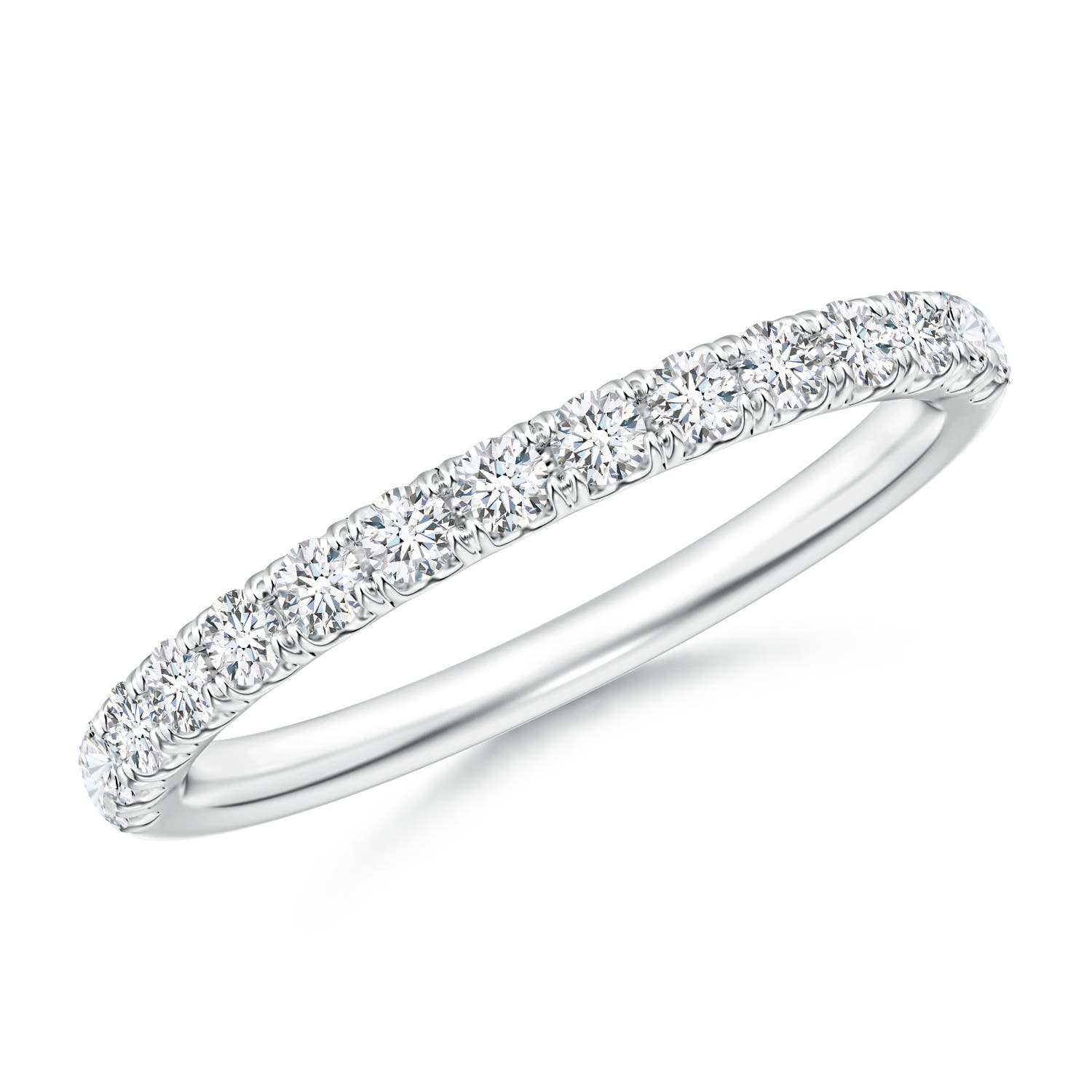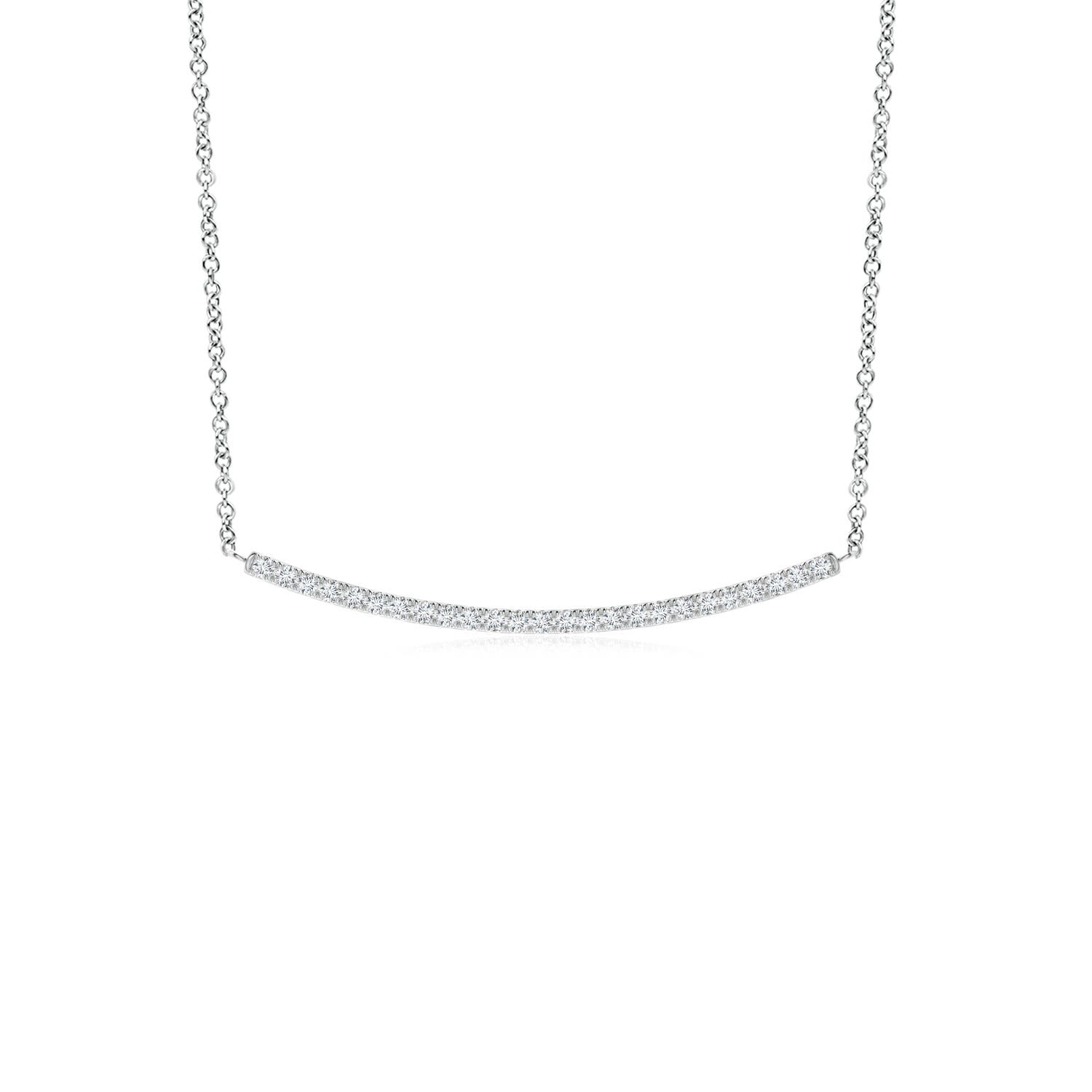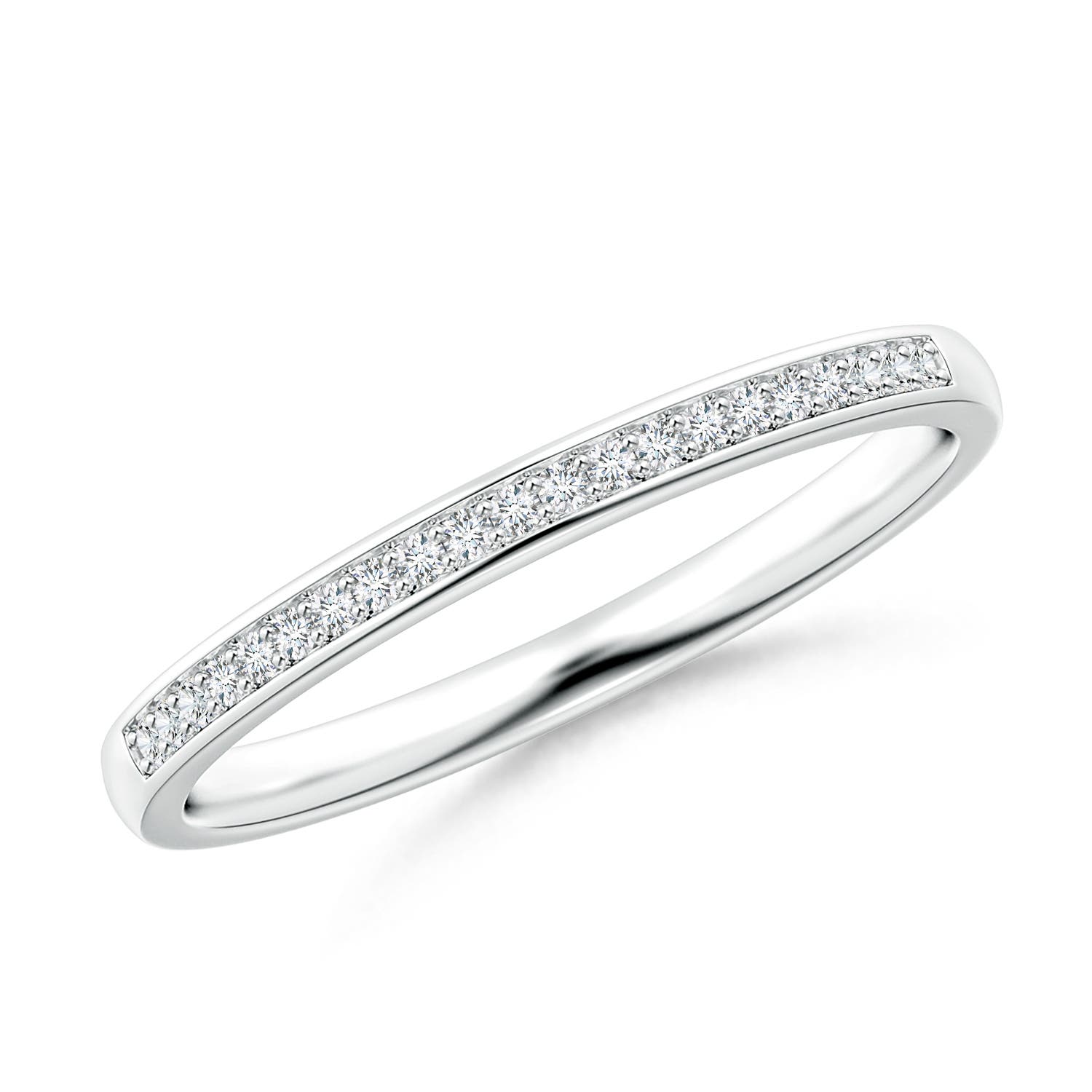If you consider more sparkle is more fun and desire to have a look like a thousand stars on your jewellery, the pave setting can offer you just that. It is a brilliant setting style in which the diamonds can easily hide the metal and lend an all-sparkly look that’s oh-so-romantic!
To know everything about this lovely setting style, keep reading…
What is a Pave Setting?
The word pave, which means ‘to pave’, is originally derived from the French term ‘pave’ and is pronounced as ‘pah-vay’. Small diamonds or gemstones are held by small metal prongs or beads to cover a portion of the jewellery. They create the appearance of a glittering path full of sparkle, which ultimately draws more attention to the centre gemstone. This is one of the main selling points of this beautiful setting. The metal prongs tend to go unnoticed, so all you get is the effect of continuous sparkle. Pave setting is majorly used to create a halo or adorn the shoulders of a ring or the bale of a pendant. Pave-set accents are also used to cover an entire surface or anywhere in the design where a sparkling outline is required.
Different Types of Pave Settings:
There’s much more to this versatile and intricate setting of stones. Here are a few types of pave settings that are used to add more sparkle to fine jewellery:
1) Micro Pave
When melee diamonds are used to cover an entire band or give an all-surface dazzling look, they are held in a micro pave setting. Extremely small diamonds of less than .01 carat weight each, are arranged in several rows and set close to one another. A micro-pave setting can secure a minimum of 50 small diamonds and more. It is an intricate work of art and requires some serious precision and craftsmanship.
2) U-Cut Pave
One of the most popular pave settings is the U-cut pave. It derives its name from the U-shaped grooves that are cut into the metal to create a wavy or scalloped pattern. The diamonds set into these grooves shine from every angle. With this setting, the diamond to metal ratio is higher. This allows more light to reflect on the diamonds.
3) French Pave
French pave or fishtail pave features intricate V-shaped metalwork on the front, which appears like the zigzag edges of a fishtail. In this setting as well, the metal is barely visible on the top and the diamonds take away most of the attention with their endless sparkle. Due to its interesting texture and intricate work, the French pave style is quite unique.
4) Petite Pave
The petite pave setting is similar to the traditional pave setting, with the exception that it secures the diamonds with incredibly smaller prongs. This highlights the diamond accents by making them more visible and prominently brilliant.
5) Bright Cut Pave
Also called channel-set pave, the bright cut pave is a traditional type of pave setting. When you want that extra durability for accent stones, this setting is most preferred. The metal walls provide added protection to the diamond melees held within tiny prongs. They also allow space for filigree and milgrain detailing. However, this type of pave setting increases the metal to diamond ratio and the diamonds tend to sparkle lesser than usual.
Advantages and disadvantages of the pave setting:
The Advantages:
- Pave setting can be used to add an extra amount of sparkle to a design. The diamonds in this setting create a brilliant, starry effect.
- It helps to bring attention to the main stone as well as enhances the overall brilliance of the jewellery.
- Being a flexible type of setting, it is incorporated in a variety of design options, whether modern, classic, or vintage.
- If you have a less sparkly focal stone, the pave set accents around it will amplify the overall sparkle and lend a balanced look, all at an affordable price tag.
The Disadvantages:
- It is difficult to resize your ring if the entire shank is covered with pave-set diamonds.
- Cleaning can be an issue because of the small grooves and areas where dirt can get collected.
- In general, the pave setting is quite safe to wear every day. However, there is a slight likelihood of dislodging or losing some gems if your jewellery is struck hard.
Pave Setting vs Other Settings
Although pave and shared prong settings look identical at the first glance, they do have different ways to hold the diamonds in position. The pave setting has micro prongs that are meant to hold small diamonds securely and the prongs are barely visible. On the other hand, a shared prong setting uses shared prongs instead of individual prongs to secure diamonds next to one another. In this setting, the metal is seemingly visible around the stones.
2) Pave vs Channel
In a pave setting, the small diamonds are held by small prongs, whereas in a channel setting the diamonds are set between the metal walls. The pave setting is more versatile and makes the centre stone more prominent, which is not the case with the channel setting. On the flip side, the tiny prongs in a pave setting snag onto loose fibers. This can be avoided in the case of a channel setting.
In Conclusion
Pave setting is commonly used to embellish intricately designed jewellery and the outcome is major bling with exquisite details. So, if you can’t resist the extra bling and extravagance of pave-set accents, then this setting is for you. Explore our exquisite pave-set jewellery pieces to pick a stunner that catches your eye.
































